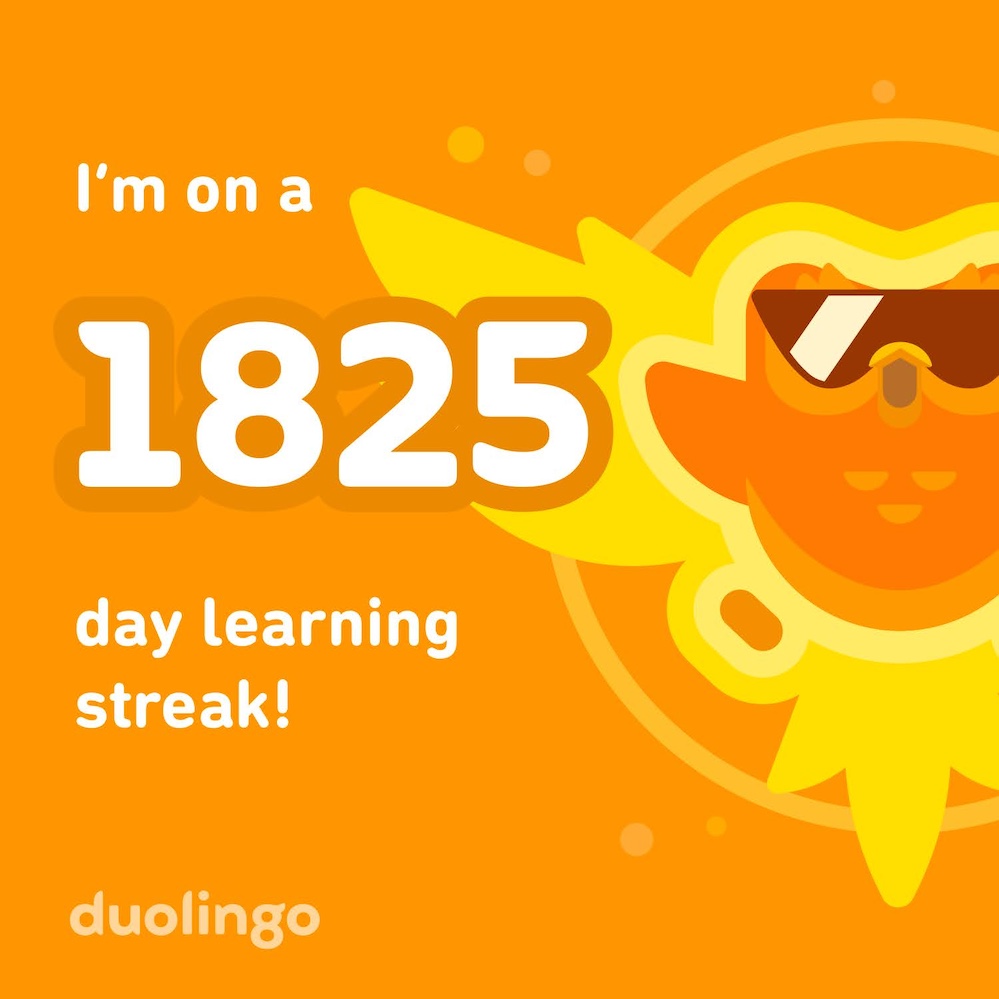
I am… a fanatic.
This is the five year mark! I feel lucky to have access to lessons like this.

Hints on how A.E. Graves spends her imaginary spare time

I am… a fanatic.
This is the five year mark! I feel lucky to have access to lessons like this.
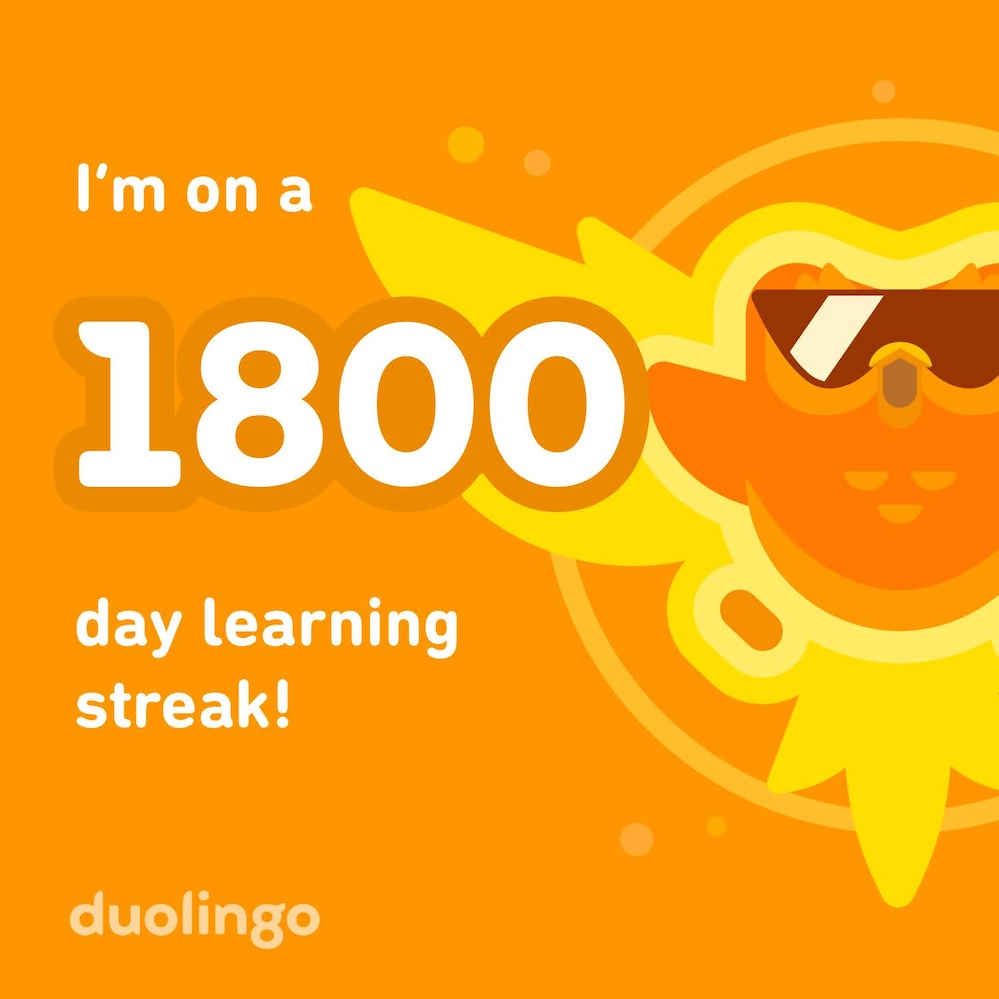
I am persistent.
This year it has been all German. I have travel plans that require another language, and my reluctance to study that language has me doubting whether I will really go…
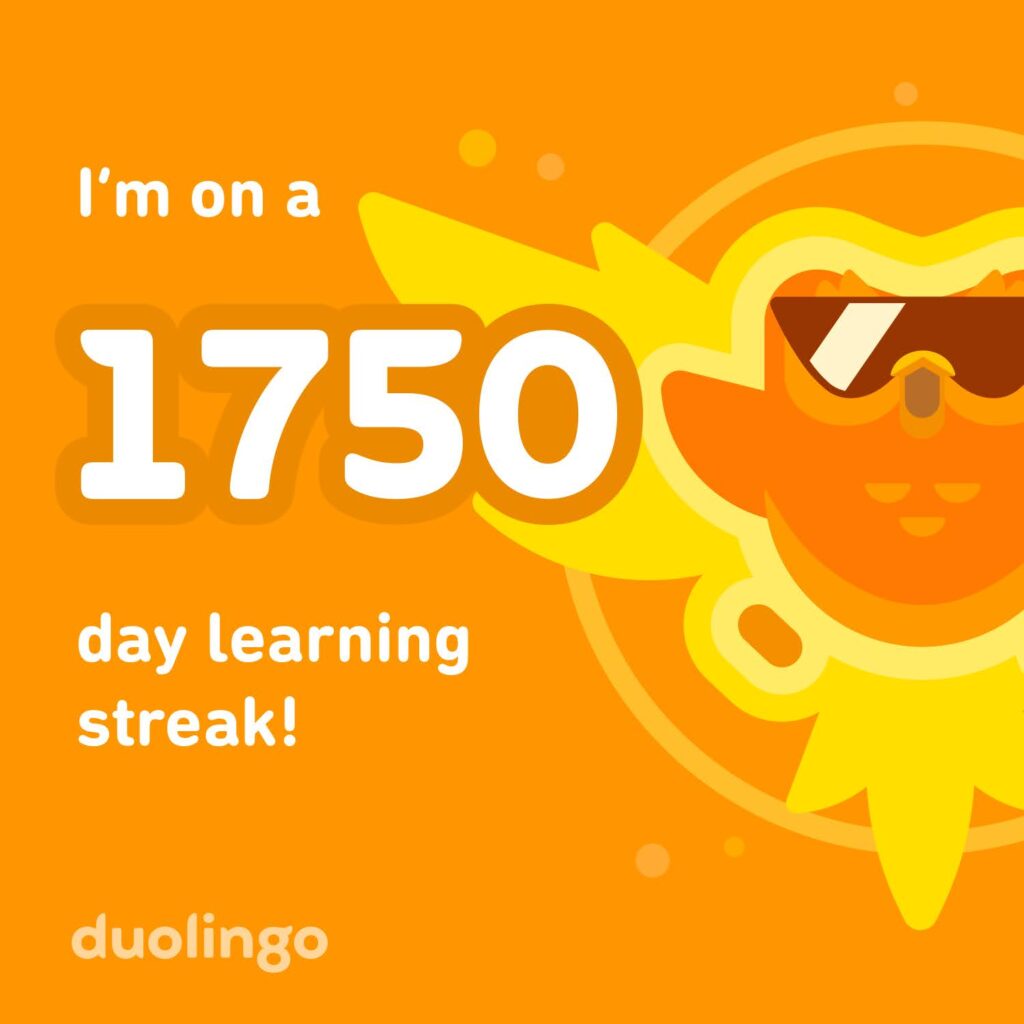
Like the book title about being obsessed with books, my language study streak is a gentle madness.
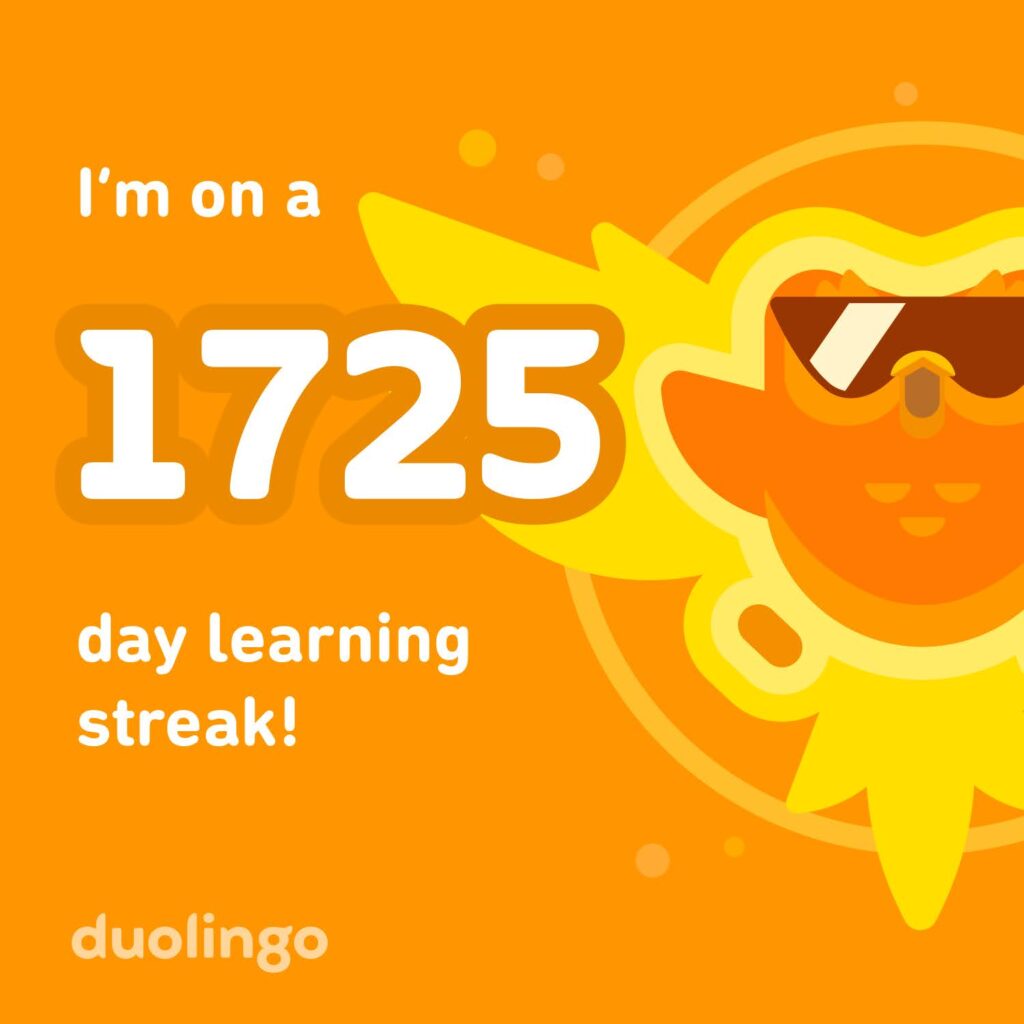
The things I do for my brain are… geeky.
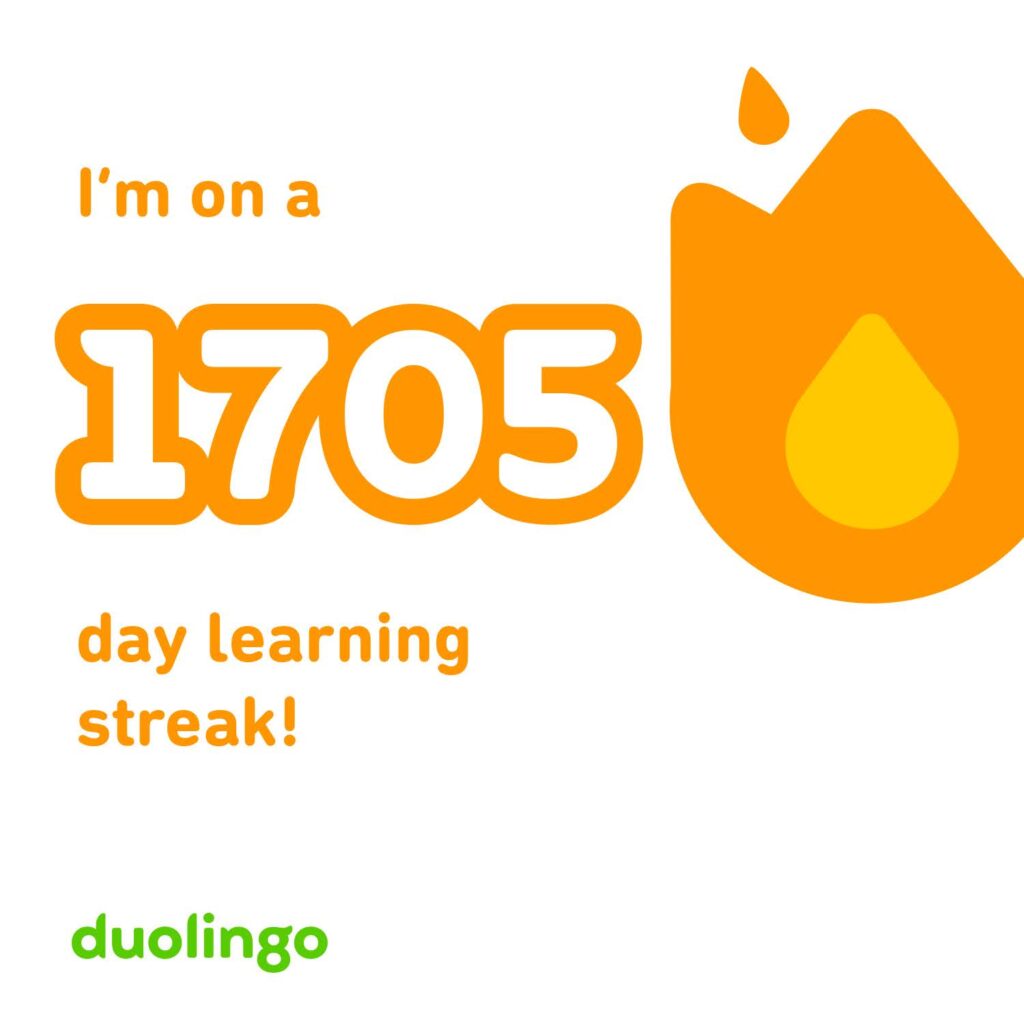
Still German, this year. There is so much to learn!

Actual text conversation:
Him: Hello!
Me: I’m at home, not assembling a table.
Him: Let me know when you’re not finished.
We get along so well.
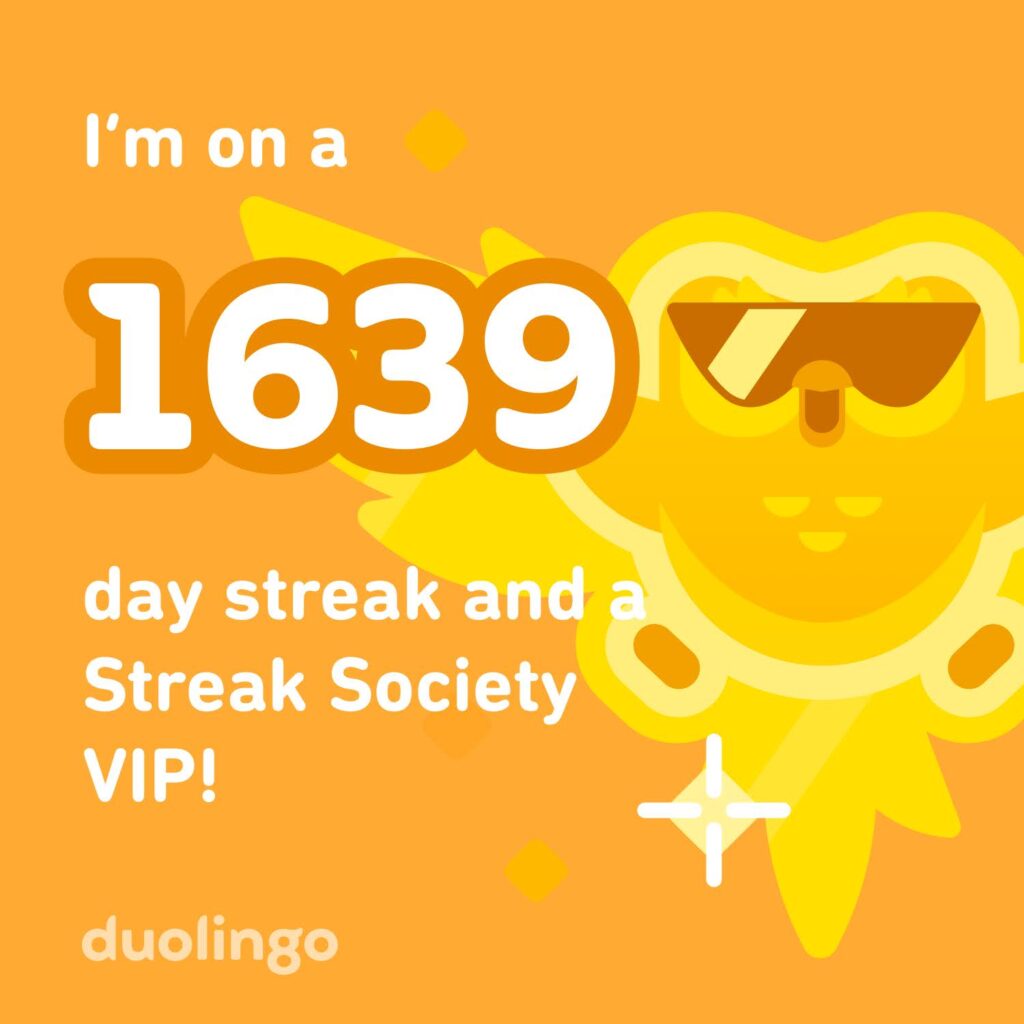
I am ridiculous.
I usually practice German, and will eventually choose my alternate language this year. I should go back to Spanish, but I forget it instantly. I want to return to Japanese, but I found my study notebook, and I don’t understand my own notes! (GAAAAAHHHHH! [Scream that sounds similar in Japanese, actually.])
Google Translate has improved, but often uses less common words or is too literal. I use it when translating discussions of new subjects, but have had feedback multiple times from native German speakers that it isn’t quite right, and they prefer my efforts. But… But…
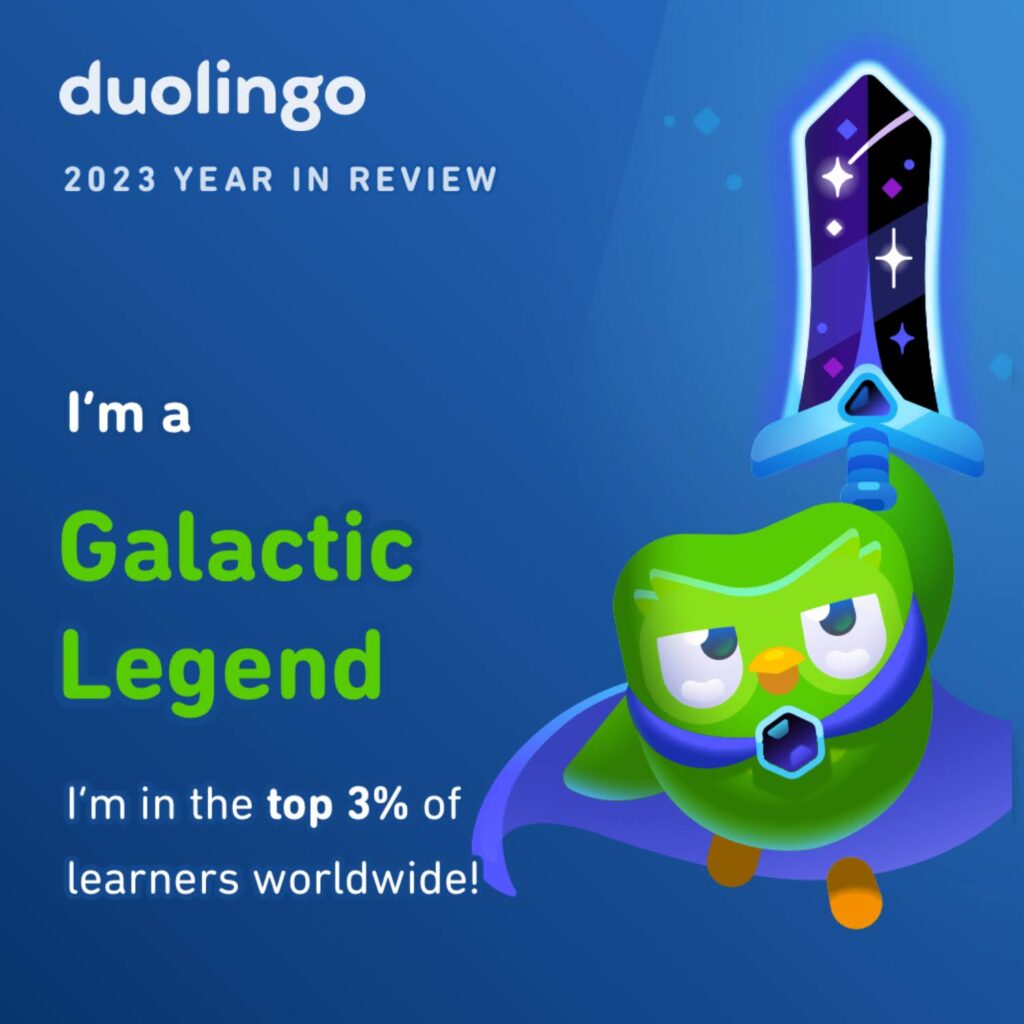
I have the nerve to be mad that the year in review is based on my November 30th progress. HAHAHAHAHAHA.
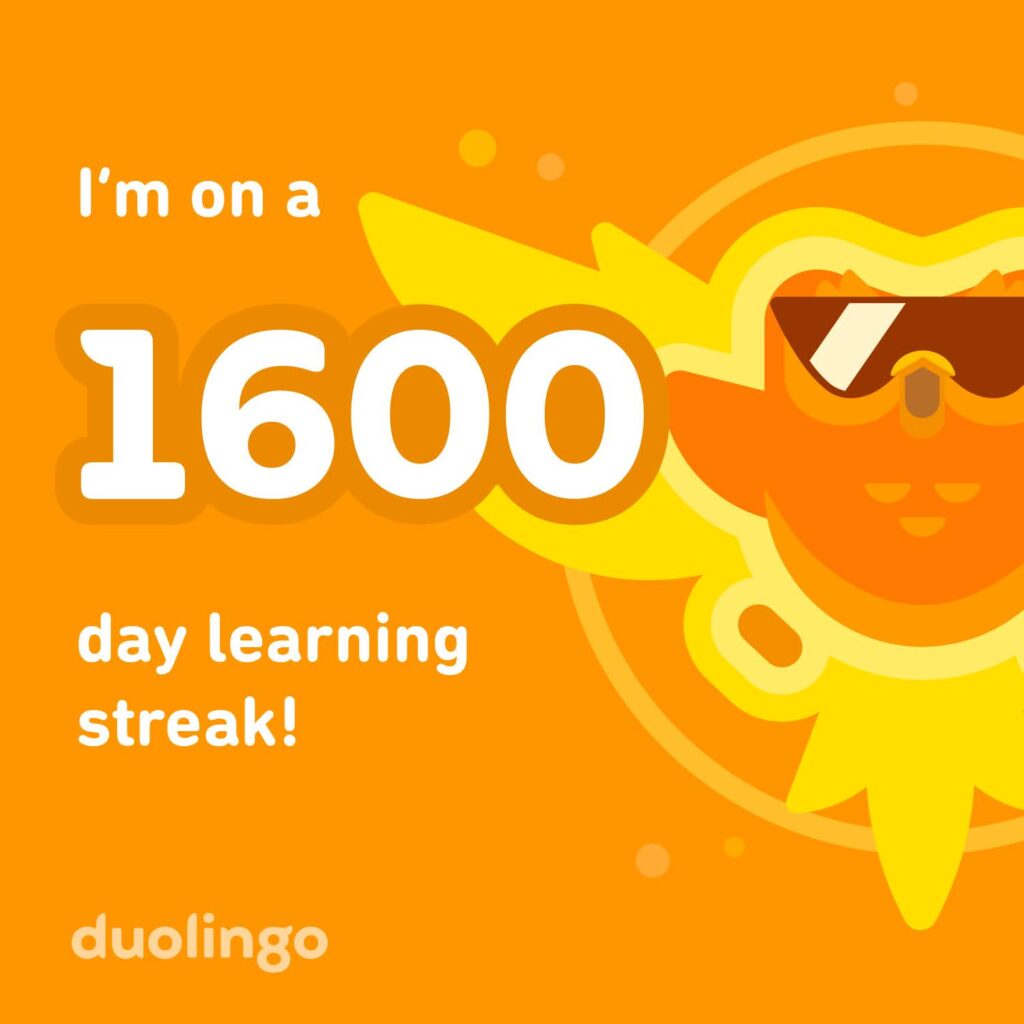
Yes, it is outrageous. Yes, it is good practice. Yes, I’ve been at it so long that they keep updating the lessons AROUND me.
This year I spent time on Hawaiian, and then switched back to German. I miss Japanese, but fear that I forgot all the kanji already. I’m not cool enough for French and Spanish this year, though I’m happy that I found my notebook with Spanish and Japanese notes. (They… are not similar!)
Yes, I’m a paying member, so I was able to buy a “streak freeze” on the few days I couldn’t get to my lessons before midnight. But STILL. I’m… persistent! The owl (die Eule) mascot, Duo, is momentarily appeased.
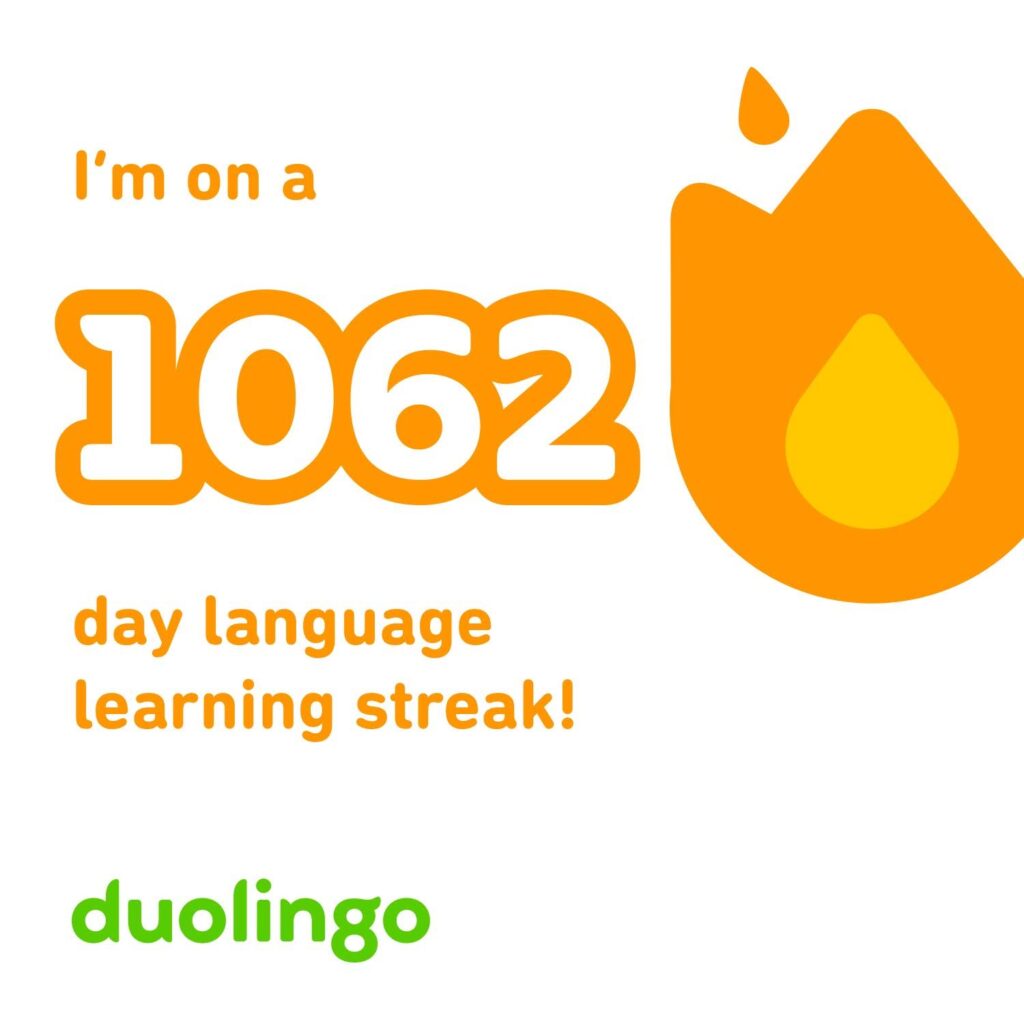
Even I am surprised at my persistence!
I’m still studying Japanese, but my lack of kanji memorization is slowing me down, and I haven’t been making the flash cards from my notes to get to the level I need to be at. But I’m not giving up, either…